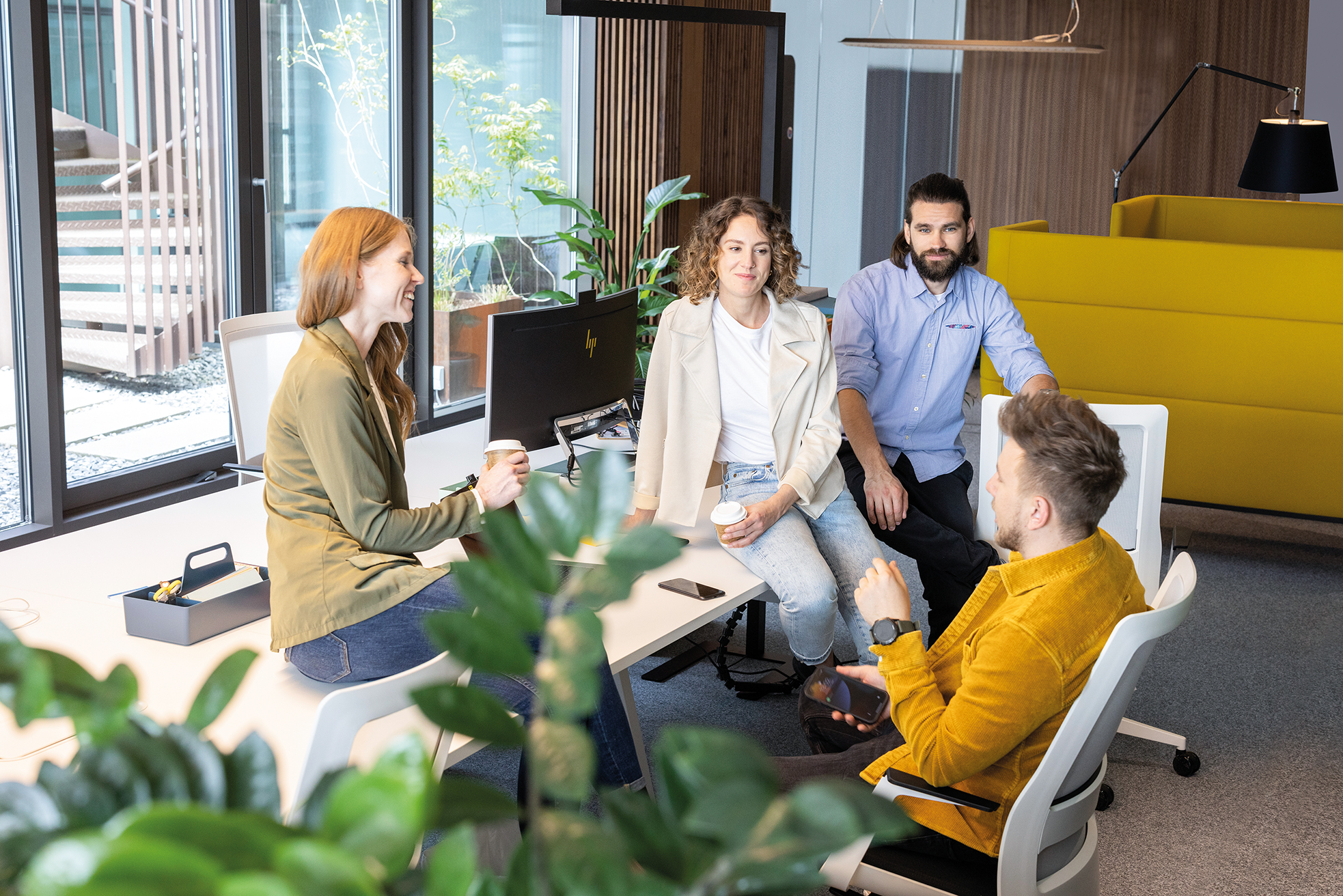From personal workplace to collective office?
By Helena Pumberger, 20.06.2022

Right next to the colourfully framed family photos is a diary with personal appointments noted down in it. The drained coffee cup with the inscription “Top Professional” is waiting to be refilled. A greeting card hangs on the pin wall.
The personal desk in the office – a piece of home that is being questioned more and more. The decentralisation of work, work at home and remote work models are becoming integral components of the new working world. Particularly the alternation between office and one’s own four walls has meanwhile become standard practice. For this reason office space is being constantly cut back. Result: One desk per employee is often no longer feasible.
Between area concentration and creative extension.
You can’t have both – work at home and a personal workplace in the office. More and more firms share this opinion. The orphaned desk during the days of remote work at home is unused space. Costs can be saved by reducing this through concentrating office space. One option for concentrating space is the collective use of desks (= desk sharing). What was once a personal workplace is now shared by several persons.
To compensate for office-space concentration, the office environment is being made increasingly attractive. Hitherto unused areas or zones are being used for new and creative spatial typologies. Working cafés, libraries, campus zones and intermediate zones support collaboration as well as undisturbed and concentrated work. Communication areas with modern equipment enable the integration of virtual participants and support hybrid communication with colleagues outside the office. The more different spatial options are available, the easier it is for employees to find the suitable environment for their various tasks. While an independent place at a shared desk usually suffices for temporary employees from satellite offices, for those persons who alternate between work in the office and work at home the requirement for team-oriented collaboration is essential during the times they are present at the office. Communication must flow freely within the individual department or in the project team and be supported by the office environment. The decision between spatial condensation and spatial extension apart from desks is not an either/or: as individual work space is restricted, you need an extension of creative zones for different activities and team-oriented project work.
Hitherto unused areas or zones are being used for new and creative spatial typologies.
Are employees being hounded out of the office?
The actual restructuring of office space in fact involves several questions and issues. If there’s a reservation system for desk-sharing workplaces, skirmishing often breaks out to get the best desks. Some people even speak about this system being used to hound employees out of the office entirely. Lots of people prefer to work from home rather than having to face the pressure of finding a place. People of habit often have problems if they have to re-orientate themselves every day and adapt their work method. If a firm introduces desk sharing, unavoidably it will have to establish a clean desk policy as well. The desk will then have to be completely cleared and left clean at the close of the day. After all, another employee might need the desk the next day.
Door opener to the new world of work.
Nevertheless, there are ways of simplifying the organisation of collectively used work spaces. The morning fuss about finding a suitable desk can be counteracted with a pre-reservation system for the workplaces. Employees have the possibility of reserving a desk on the previous day, or at the beginning of the week, thus ensuring an orderly and easygoing procedure. Mobile trolleys and lockers for every employee save time when setting up a temporary workplace.
Collaboration between the departments – despite the distance between desks – can be facilitated by setting up creative spaces, meeting places and intermediate zones that support discussion and communication. What is even more efficient is to plan the office concept as open units in the style of modern co-working spaces. A communal structural environment is set up in the open space for persons who work closely together, creating excellent organisational and creative scope, supported by acoustically effective furnishings and by partitioning and zoning screens. Individual retreat zones are available for concentrated work and remote talks, for instance silent rooms.
Desk sharing and collective office space are not feasible in all the departments of a firm. Some employees will still be tied permanently to their desks because of the nature of their work. But here, too, collectively usable zones can be devised during the planning phase. A logically worked-out structure is needed for the sensible and efficient overall planning of an office layout optimally adjusted to workflows and communication streams.
Despite the difficulties and reservations about the loss of individual workplaces, collectively used office areas open up many doors in the world of New Work. They offer scope for all forms of work, encompassing everything from increased collaboration to activity-based working. Particularly because digitisation is increasingly simplifying routine processes, thus enabling location-independent work, the office will become even more of a pivotal meeting point that promotes collaboration and cooperation. Diversity in collectively used facilities supports teamwork and generates social friction – the hothouse of innovative ideas. Organisational culture plays a central role here. Despite remote work and work at home, employees should enjoy coming into the office where they encounter a supportive environment for their tasks.





